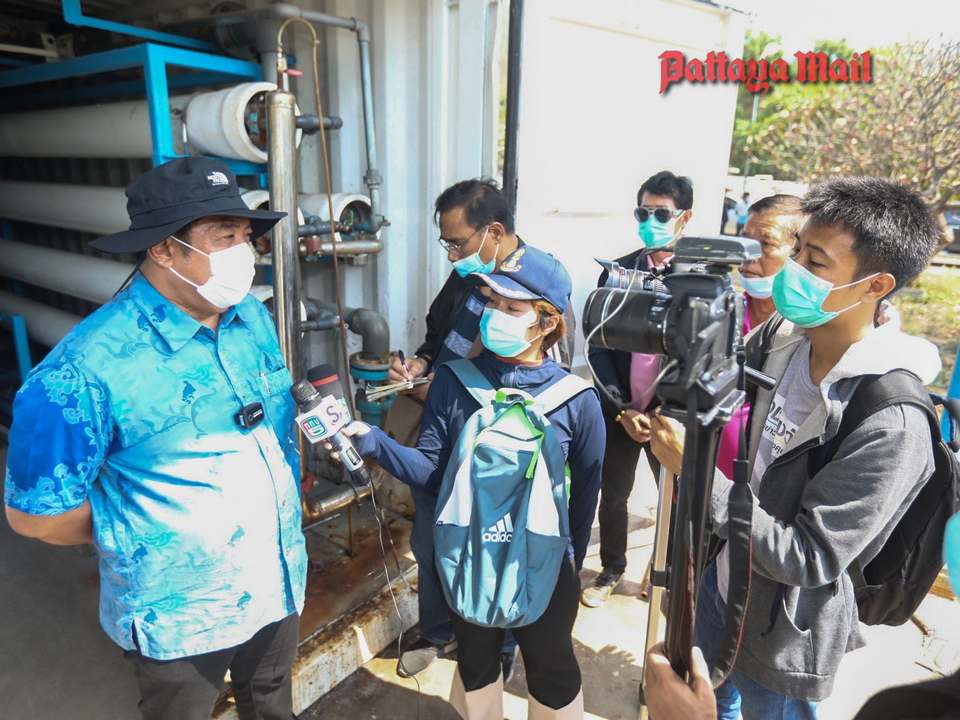
Nearly a decade after Pattaya proposed laying a pipeline from the mainland to deliver water to Koh Larn, the island still is suffering shortages with the island’s desalination plant offline due to neglect.
Mayor Sonthaya Kunplome inspected the sorry state of Koh Larn’s tap-water supply Feb. 3, finding that poor maintenance has forced East Water Co. to shut down its desalination plant at Samae Beach, forcing island residents to pay dearly to barge fresh water from the mainland.
East Water said the plant had been in operation for 20 years, but its seawater-holding pond was dirty, its foundation cracking and pumps broken down.
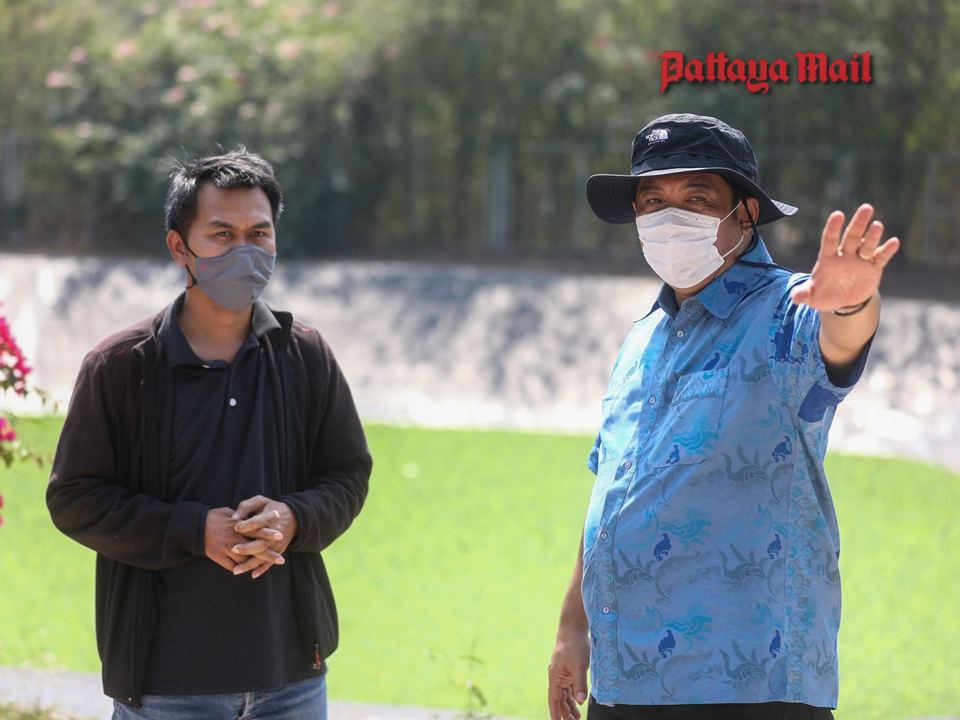
Yet, even when fully operational, the desalination plant only produced enough tap water to supply 45 percent of the island, Sonthaya said. He called on East Water to not only repair the facility, but upgrade it to allow for ten times the tap-water production to 3,000 cubic meters a day.
There is no estimate on when, or if, East Water will undertake repairs and upgrades.
Pattaya’s only other permanent option is to revive the long-forgotten plan to lay a raw-water pipeline from the mainland to the island, a project discussed extensively in 2012-14.
Initial estimates of a Provincial Waterworks Authority proposal in 2012 set the cost at 20 million baht for the pipeline and water stations on each shoreline.
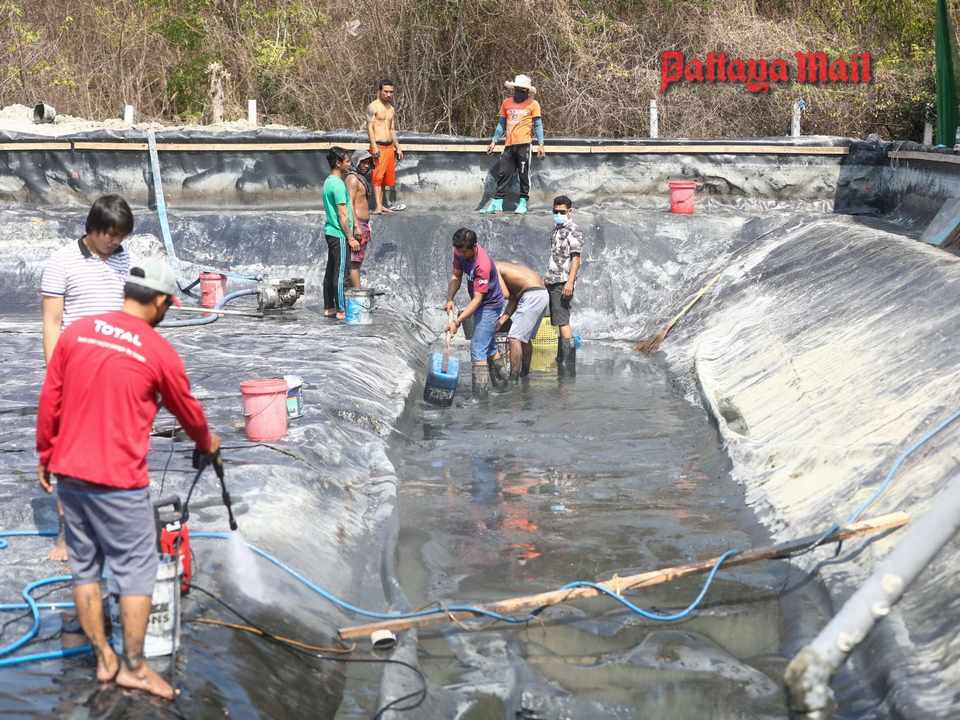
Using part of its 135 million baht Designated Areas for Sustainable Tourism Administration allocation for 2012, the city commissioned a research study to assess the construction contacts, purchases, operation procedures and company search.
The results, released in 2014, perplexingly showed that only 34.6 percent of residents approved of any of three options to solve long-running water-shortage problems. Of the remaining 65.4 percent, people either opposed the project, were unsure or – in the case of 31 percent of those not in agreement with the idea – had “no comment.”
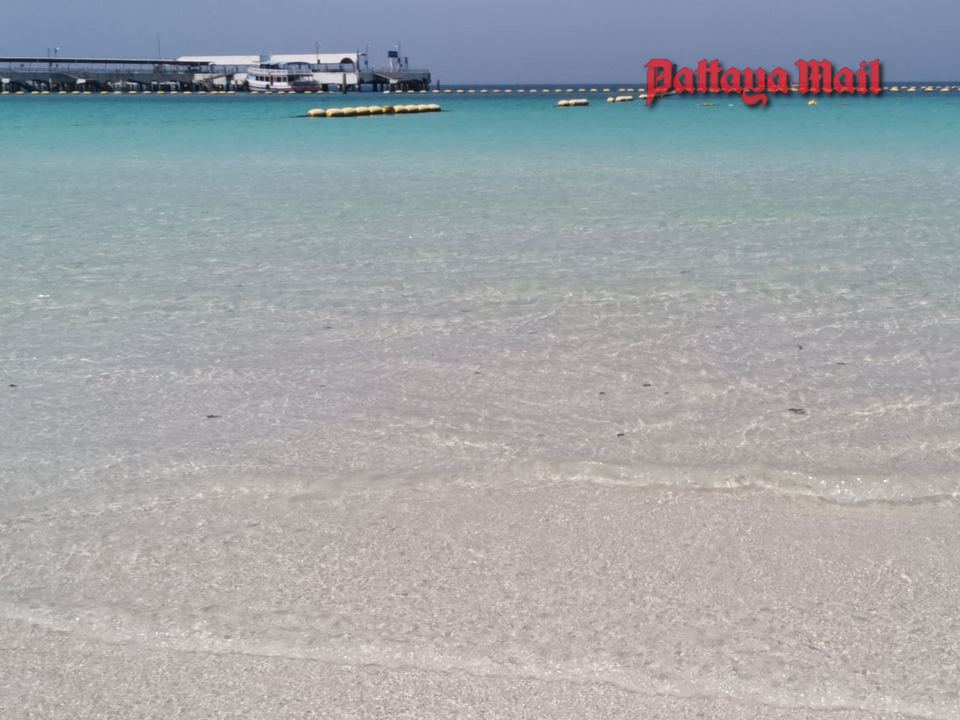
The first of three options presented in the survey would have seen a pipeline run from the Banglamung water-treatment plant to the island over a distance of approximately 24.7 kilometers and include installation of a main water meter for Koh Larn’s supply. The price tag for the project was estimated at 495 million baht.
The project calls for pipe measuring 63 centimeters in diameter and faced no real obstacles until the final 2.7 km, where the undersea pipeline would run into a coral reef. That would have required an environmental impact study lasting six months, at least.
Less-expensive options included a pipeline, using 50 cm. pipe, from the Photisampan area to Koh Larn for 13.7 km. at a cost of 288.2 million baht; and another from Thappraya area to Koh Larn, again using 50 cm. pipe, over 13 km. for 227.7 million baht. That also includes construction of a storage tank on the coast.
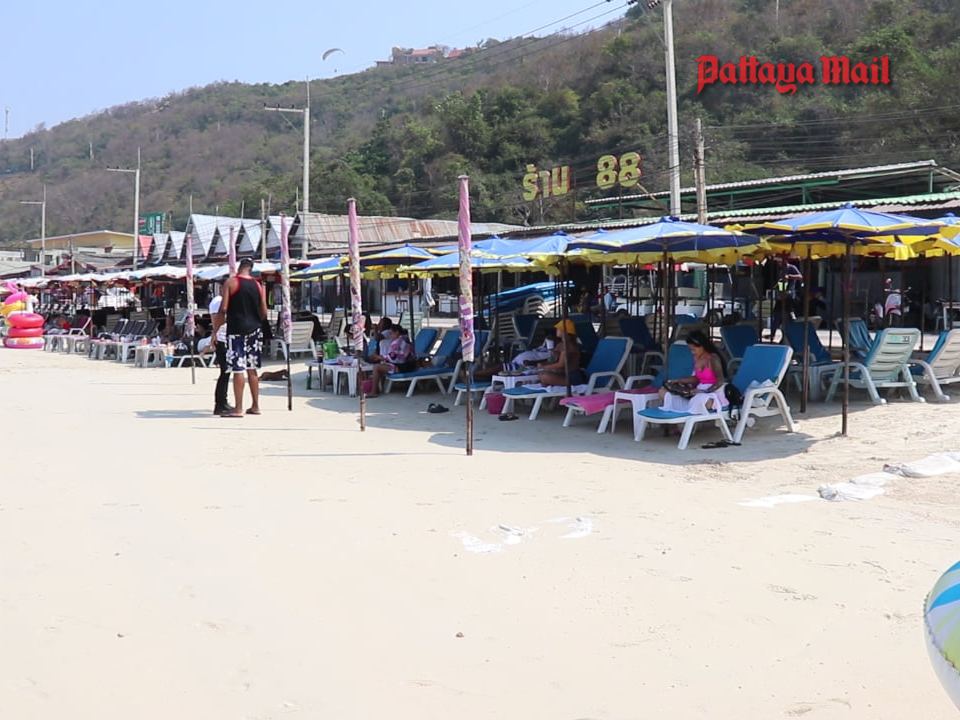
However, half of the residents surveyed expressed concerns about the pipeline project’s impact on the environment, the cost, the amount of time needed to complete it, and whether it would provide enough water.
The project was shelved and never mentioned again, until now. In the interim, Koh Larn has relied on freshwater shipments by Royal Thai Navy tanker ships and the declining production from the dilapidated East Water plant.





